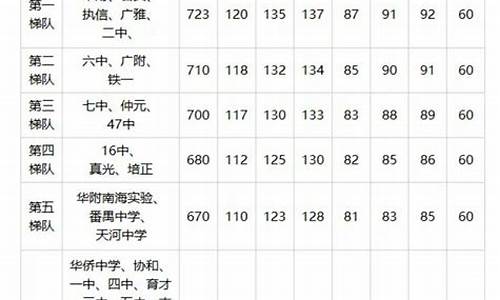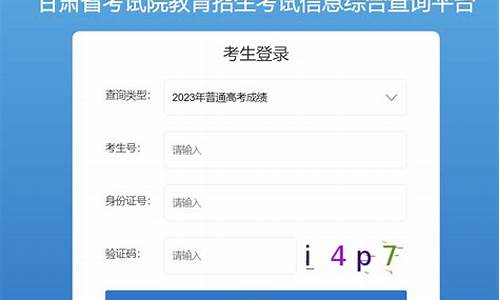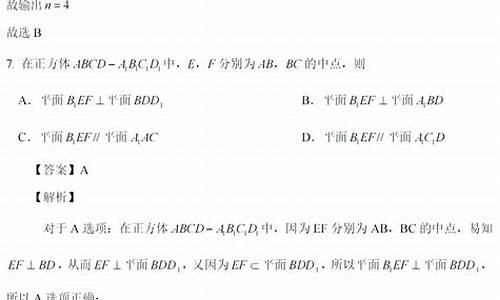您现在的位置是: 首页 > 专业报考 专业报考
高中语法动词,高考语法动词
tamoadmin 2024-05-21 人已围观
简介1.高考英语语法主要考哪些高考英语语法:九种不定式省略to的情况 一、使役动词后省略to的情况在let, make, have等使役动词后用作宾语补足语的不定式必须省略to。如: My mother wouldn’t let me go to the film. 我妈妈不会让我去看**的。 I don’t like milk, but mother made me drink it. 我不喜欢牛奶
1.高考英语语法主要考哪些

高考英语语法:九种不定式省略to的情况
一、使役动词后省略to的情况
在let, make, have等使役动词后用作宾语补足语的不定式必须省略to。如:
My mother wouldn’t let me go to the film. 我妈妈不会让我去看**的。
I don’t like milk, but mother made me drink it. 我不喜欢牛奶,可是母亲强迫我喝。
I would have him wait for me at the gate of the park. 我要他在公园门口等我。
注意:
1. 当使役动词用于被动语态时,要补上在主动语态中省略的to(主要是指make,let和have很少用于被动语态)。
2. force, oblige等虽然也表示“使”,但它们后用作宾语补足语的不定式必须带to。如:
He forced me to go with them. 他迫使我同他们一起去。
The police obliged him to leave. 警方强迫他离开。
二、感觉动词后省略to的情况
在感觉动词后用作宾语补足语的不定式必须省略to。如:
I watched her get into the car. 我看着她上了车。
I saw the woman enter a bank. 我看见这个女人进了一家银行。
We often hear her sing this song. 我们经常听到她唱这首歌。
Did you notice her leave the house? 她离开屋子你注意到了吗?
注意:
1. 这里所说的感觉动词主要包括see, hear, observe, notice, feel, watch等。但是它们用于被动语态时,其后的不定式必须带to。如:
The woman was seen to enter a bank. 有人看见这个女人进了一家银行。
但是,用于以上句型的动词notice 和watch通常不用于被动语态。
2. 类似地,动词look at和listen to后用作宾语补足语的不定式也不带to。如:
We listened to the old man tell his story. 我们听这位老人讲述他的经历。
3. 若动词feel后用作宾语补足语的不定式为 to be,则要带 to(其他情况不带 to)。如:
They felt the plan to be unwise. 他们认为这个计划不明智。
4. 若不定式为完成式,通常应带 to。如:
I noticed her to have come early. 我注意到她来得很早。
三、动词help后省略to的情况
在动词help后用作宾语或宾语补足语的不定式可以不带to。如:
Can I help (to) carry this heavy box? 我可以帮忙扛这个重箱子吗?
Mother helped me (to) do my homework. 妈妈帮助我做作业。
注意:
1. 当 help 之后接一个较长的名词词组作宾语或当其中的不定式所表示的动作主语不直接参加时,不定式通常带to。如:
Help the little boys at the back of the hall to carry the chairs out. 请帮大厅后面那些小男孩把椅子搬出去。
These tablets will help you to sleep. 这些药片将对你的睡眠有帮助。
2. 在当help用于被动语态时,不定式前的to不能省略。如:
The boy was helped by a woman to collect his scattered coins. 那男孩由一个妇女帮他捡拾散乱一地的钱币。
高考英语语法主要考哪些
《高中英语语法-使用被动语态应受哪些限制》由英语我整理,更多请访问:。本内容整理时间为05月12日,如有任何问题请联系我们。
使用被动语态应受哪些限制
英语和汉语一样,其动作都有主动和被动之分,汉语中不是所有的动词都可采用被动结构;同样道理,英语中也有不少动词不能用于被动结构,即被动语态。英语中,除不及物动词---即后面不能加宾语的动词不能用于被动语态外,还有下列情况不能使用被动语态的结构:
一、表示静态、容纳、适合等的及物动词。例如:
She has a nice car.
The woolen coat fits her well.
二、宾语是动词不定式、动名词。例如:
They promised me to go with me.
Mr.Smith wanted to have a try.
I enjoy listening to pop music.
三、宾语是反身代词。例如:
She hurt herself this morning.
They warned themselves to be careful.
四、宾语是人身上的一部分或器官。例如:
He put his hand on his chest and began to cough.
I could hardly believe my ears.
五、宾语是相互代词。例如:
They help each other in study.
We must learn from each other.
六、表示地点、处所、机构、团体、组织的名词作宾语。例如:
She joined the Party last year.
My dad reached Beijing this afternoon.
七、宾语表示行为、方式,在意义上相当于状语。例如:
She did her best.
We shall make up our minds.
八、宾语表示数量、重量、长度、大小等,在意义上相当于状语。例如:
They walked two miles.
The film lasted one and a half hours.
This desk weighs 10kilograms.
九、系动词sound,look,become,appear等也不能用于被动语态。例如:
Miss Li became a doctor ten years ago.
This plan sounds a good one.
十、一些词,如happen,take place,occur,last,belong to等等,在汉语角度看来可用被动结构,但英语只能用主动结构。例如:
Great changes have taken place in my hometown since 1949.
This car belongs to my uncle.
十一、及物动词及其宾语在意义上构成不可分割的固定词组。例如:
I made faces to have the baby laugh.
We should never lose heart.
十二、一些宾语从句也不能变成被动语态,否则意义就变了。例如:
I knew that I was wrong then.(我认识到当时我错了。)
It was known that I was wrong then.
=I was known to be wrong then.(人们知道当时我错了。)
十三、当宾语是抽象名词时。例如:
We showed special interest in science.
十四、当宾语为同源宾语时。例如:
We lived a hard life in the old days.
总之,能否用被动语态,除了应了解英语的一些语法规则之外,还要充分考虑汉语的说话习惯,掌握其普通规律,同时注意一些特殊情况,否则就会出现"中国式英语",也没法学到"地道的英语"。 《高中英语语法-使用被动语态应受哪些限制》由英语我整理,更多请访问:一、非谓语动词
“非谓语动词”可分为动词不定式、动名词和分词。它在句子中的作用很多:除了不作谓语外,它可以充当主语、宾语、表语、定语、状语与复合宾语(主语补语或宾语补语)。有些及物动词后面接不带to的不定式作复合宾语。这些动词归纳如下:一感(feel).二听(hear,listen to),三让(have,1et, make),四看(see,watCh,notice,observe)。再加上help somebody(to)do something和美国英语look at somebody do somthing。还有“二让”属特殊:get somebody to do something 与keep somebody doing。而有些及物动词后面接动名词(the -ing form)作宾语。这些动词归纳为一句话:Papa C makes friends。这是由如下动词的开头字母组成:permit,advise, practise,avoid,consider,mind, allow,keep,enjoy,suggest, finish,risk,imagine,escape,need,delay,stand(忍受)。 为了容易记住,也可以编成顺口溜:“允许完成练习,建议避免冒险,考虑延期逃跑,喜欢保持想象,需要反对忍受”。其相对应的动词依次是:permit/allow,finish,practise;
advise/suggest, avoid,risk: consider, delay, escape/miss; enjoy/appreciate, keep, imagine; need/want/require,mind. can't help/can’t stand。
二、复合句
1、学生最容易混淆的是定语从句与同位语从句的区别。
例如:A、The news that our team has won the match is true. (同位语从句)
B、The news that he told us surprised everybody here. (定语从句)
关键的区别在于连接或关系代词that:有意义的是定语, 无意义的是同位。因为引导定语从句的that在从句中作主语或 宾语,而引导同位语从句的that只起到连接词的作用。
2、接着容易混淆的是引导定语从句的关系代词that与 which:that之前是不定(代词)、序数(词)、(形容词)最高级:which之前是介词短语与逗号(非限制性)。
例如:A、All that we have to do is to practise every day.
B、The first lesson that I learned will never be forgotten.
C、I have lost my pen,which I like very much.
D、The house in front of which there is a garden is my home.
三、It的用法
1、It除了代替人和物以外,还可以作形式主语。而真正的主语(不定式、动名词或从句)则放于谓语或表语之后。
例如:It is nor easy to finish the work in two days.
然而有少数表语之后接动名词作真正的主语。这些表语是:无助(no help)、无用(no use)、没好处(no good);工作(hard work)、费时(a waste of time)、又危险(a danger)。
例如:A、It is no use crying over spilt milk.
B、It is a waste of time waiting for him.
2、It还可以作形式宾语。通常下列动词后面可接it作形式宾语:2f2tcjm(find,feel,think,take,consider,judge, make)。
例如:A、He made it clear that he was not interested in this subject.
B、I think it no use arguing with him.
3、It用于强调句式。要强调句子的某一部分(主语、宾语、 状语),可以把it当作先行词。这种句子的结构是:It is(was)+ 被强调部分+that(who)+句子的其余部分。
例如:A、It iS Professor Lin who teaches us English—(强调主语)
B、It was in Shanghai that l saw the film.—(强调状语)
C、It was in 1990 that I worked in the factory.(同上)
但要注意与定语从句的区别。
例如:D、It was 1990 when I worked in the factory.(定语从句)
在强调句式里,我们把强调结构It is(was)…that除去,句子还很完整。如例句C。而例句D就不能。
四、倒装结构
学生容易混淆的是全部倒装与部分倒装。如何区分之,编个顺口溜:副(adv.)介(prep.)提前全倒装,其它句式部分倒;否定提前倒助动,让步状语倒表语;复合句式倒主句,不
倒装的属特殊。下面举例说明:
A、Here comes the bus.(副词提前,全倒装)
B、Here he comes.(代词作主语,不倒装)
C、In front of the house lies a garden.(介词短语提前,全倒装)
D、Never shall I do this again.(否定词提前,部分倒装)
E、Young as he is ,he knows a lot.(让步状语从句,表语倒装)
F、Only when he told me did I realize what trouble he was in.(only 修饰状语,主句倒装)
G、Only he can save the patient.(only修饰主语.不倒装)
H、Not only will help be given to people,but also medical treatment will be provided.(否定词提前,部分倒装)
I、Not only he but also we like sports.(连接两个主语,不倒装)
五、虚拟语气
虚拟语气也是一个难点。所谓虚拟语气是表示说话人的愿望、假设、猜测或建议,而不表示客观存在的事实。它通过句子的谓语动词的特殊形式来表示。现归纳如下:纯假设,用虚拟,动词时态退一级:条件句,分主从,主句谓语前加would (should,could,might);表愿望,用虚拟,wish后面接宾语(从句):现在过去与将来,动词时态退一级:提建议,用虚拟,宾语(从句)动词用(should)do:俩建议,三要求,再加坚持与命令(suggest,advise,demand,require,request,insist,order):It is time和eoukd rather,后接丛句用虚拟:部分主语从句中, 谓语用虚拟结构 (It is necessry /important/natural/natural/strange/strange that……should do)。 下面举例说明:
A、If you came tomorrow,we would have the metting. (条件句虚拟)
B、Without air,there would be no living things.(同上)
C、We wish we had arrived there two hours earlier.(表示愿望虚拟)
D、He demanded that we (should)start right away.(表示建议虚拟)
E、It is(high)time that we left (should leave)now.(特殊从句虚拟)
F、I would rather you gave me the book.(同上)
G、It is necessary that we should clean the room everyday,(主语从句虚拟)
H、He speaks English so fluently as if he were English. (特殊从句虚拟)
总之,语法是从语言实践中总结出来的规则,要边学边寻找规律,以提高学习效率。在学习中不能只记一些语法规则,要进行实践练习。通过练习,可以发现和纠正错误,而且有利于况固所学知识。









